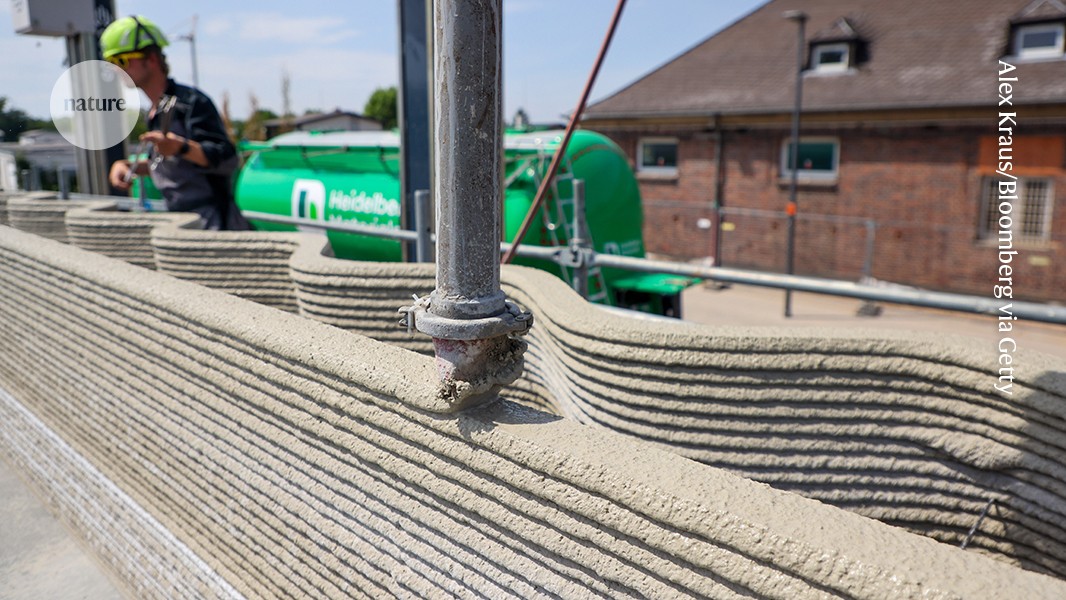www.popsci.com
The image of Mars shows off the Red Planets renowned colour from the viewpoint of ESAs Rosetta mission as it flew past on February 24, 2007, en route to Comet 67P/Churyumov-Gerasimenko. It is a composite image created by combining near-infrared, green and near-ultraviolet colour information obtained by the OSIRIS Narrow Angle Camera. The polar ice cap at the south pole is particularly bright, and wispy clouds are seen most clearly around the planets curved horizons. ESA & MPS for OSIRIS Team MPS/UPD/LAM/IAA/RSSD/INTA/UPM/DASP/IDA, 2007ShareThe color red and the planet Mars go together like Earth and its oceans or Saturn and its rings. However, our understanding of how the Red Planet got its signature hue might be wrong. A new hypothesis focusing on ferrihydrite is detailed in a study published February 25 in the journal Nature Communications. The ferrihydrite might have formed back when there was still water on the planetpotentially when it was habitable.Seeing redIn the decades that astronomers have been studying Mars, weve learned that its distinct color comes from rusted iron minerals in the dust that covers the planet. At some point in the Red Planets 4.5 to 4.6 billion year history, the iron bound up in its rocks reacted with water and oxygen in the air, similar to how rust forms here on Earth. The resulting iron oxide was then broken down into dust and was spread around the planet by winds.The Red Planet Mars got its iconic colour from a combination of rusting and erosion over its 4.6-billion-year history. Mars was a once wetter place than the dry, barren world we know today. During its early history, iron in its rocks reacted with oxygen and water to create rust. The rust was washed into the rivers, lakes and seas that used to cover Mars, becoming incorporated into the underlying rocks. Volcanic activity could also have triggered ice-melting events, further contributing to this process. Once Mars dried out, this rusty rock was broken down into dust over billions of years. Strong winds blew this dust all over the planets surface, gradually turning Mars red. Signatures of the water-rich environment in which the rust formed are still preserved in the dust, as analysed by spacecraft studying Mars today. CREDIT: ESA. However, iron oxides come in different varieties. Astronomers have debated the exact chemistry of Martian rust for years. Figuring out how this rust forms is a crucial window into Mars environmental conditions at the time of rusting. Closely linked to that environmental question is whether Mars has ever been habitable.Earlier studies of the iron oxide component in Martian dust that were based on spacecraft observations alone did not find any evidence of water within it. This led researchers to conclude that this particular type of iron oxide must be a mineral called hematite.Which iron oxide is it anyway?This new analysis combining spacecraft observations with some newly developed laboratory techniques shows that Mars red color is better matched by iron oxides containing waterknown as ferrihydriteand not hematite.Ferrihydrite typically forms quickly around cool water, which means it must have formed when Mars still had water on its surface. The ferrihydrite has kept this watery signature to the present day, despite being constantly ground down and spread around the planet for billions of years.While trying to create a replica of martian dust in the lab with different types of iron oxide, the team from this study was in for a surprise.We found that ferrihydrite mixed with basalt, a volcanic rock, best fits the minerals seen by spacecraft at Mars, Adomas Valantinas, a study co-author and postdoctoral researcher at Brown University, said in a statement. Get the Popular Science newsletter Breakthroughs, discoveries, and DIY tips sent every weekday. By signing up you agree to our Terms of Service and Privacy Policy.While Mars is still undoubtedly the Red Planet, this new finding changes our understanding of why it is red.The major implication is that because ferrihydrite could only have formed when water was still present on the surface, Mars rusted earlier than we previously thought, said Valantinas. Moreover, the ferrihydrite remains stable under present-day conditions on Mars.Dust in the (Martian) wind, but on EarthPrevious studies have suggested that ferrihydrite might be present in martian dust, but this research offers some of the first comprehensive proof with a unique combination of space mission data and lab-based experiments.In the study, they used an advanced grinder machine to create a realistic replica of the martian dust. The grinder can create a dust grain equivalent to the size of 1/100th of a human hair. The team then analyzed the samples using the same techniques that orbiting spacecraft will use in order to make a direct comparison. This pinpointed ferrihydrite as the best match.Martian dust is mostly rust. Marss famed color has captivated humankind for centuries, earning its nickname of the Red Planet. Romans named Mars for their god of war because its colour was reminiscent of blood, while Egyptians called it Her Desher, meaning the red one. CREDIT: A.Valantinas. This study is the result of the complementary datasets from the fleet of international missions exploring Mars from orbit and at ground level, Colin Wilson, the European Space Agencys (ESA) Trace Gas Orbiter (TGO) and Mars Express project scientist, said in a statement.Mars Express analysis of the dusts mineralogy helped show how even highly dusty regions of Mars have water-rich minerals. Additionally, TGOs unique orbit allows it to view the same region under different lighting and angles. This allowed the team to disentangle particle size and composition, which proved essential for recreating the correct dust size in the lab.Other data from NASAs Mars Reconnaissance Orbiter and ground-based measurements taken by NASA Mars rovers Curiosity, Pathfinder, and Opportunity, also helped make the case for ferrihydrite.We eagerly await the results from upcoming missions like ESAs Rosalind Franklin rover and the NASA-ESA Mars Sample Return, which will allow us to probe deeper into what makes Mars red, said Wilson. Some of the samples already collected by NASAs Perseverance rover and awaiting return to Earth include dust; once we get these precious samples into the lab, well be able to measure exactly how much ferrihydrite the dust contains, and what this means for our understanding of the history of waterand the possibility for lifeon Mars.However, the samples from Perseverance are not expected to make it back to Earth until 2040, pushed back from the original target of 2031. So for now, we will still be debating just how Mars got so red.











